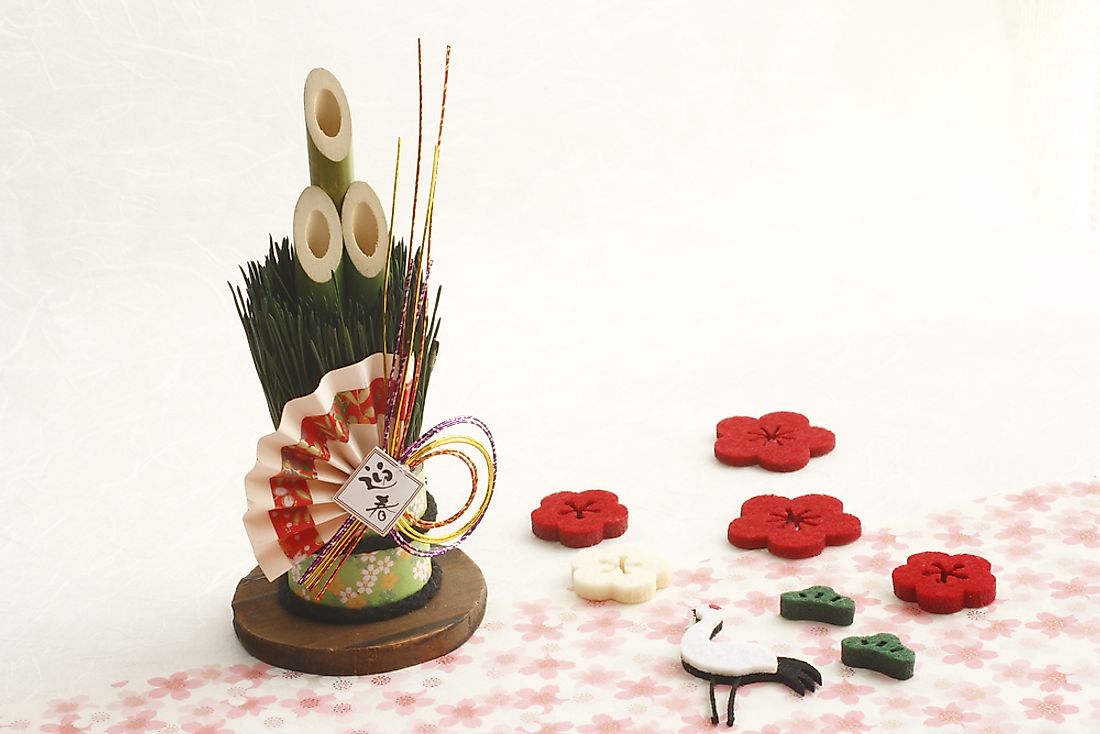What is Kadomatsu?

A Kadomatsu is a traditional Japanese decoration that is usually placed in front of houses to serve the purpose of welcoming ancestral spirits or kami of the harvest season. They are placed after the Christmas celebrations and left until January 7-15. They are considered a temporary shelter for the kami spirits. Kadomatsu is made from bamboo, pine, and ume trees. The make and the design of the Kadomatsu vary depending on the regions that they were made in. The core purpose of the New Year ceremonies is usually to give respect and honor to the toshigami, a god that is believed to be responsible for bumper harvests. After January 15, but often on the 19th, the Kadomatsu are burnt down to appease the ancestral spirits and to release them from the temporal habitat. They are burnt in a ritual ceremony called Dondoyaki.
Construction and Installation of Kadomatsu
Kadomatsu are typically made from bamboo, pine or ume trees. Bamboo trees signify longevity, pines represent prosperity, and ume represent steadfastness. The center of Kodamatsu is usually made from three bamboo shoots. The shoots are usually large but are different heights in order to represent Heaven, humanity, and Earth. The shoot representing Heaven is usually set to be the largest whereas the one representing Earth is usually set to be the smallest and shortest. After assembling the parts of the Kodamatsu, they are bound together using a straw or a newly woven straw rope. After being bound together, the Kodamatsu is ready for installation at the entrance of homes. They are put in pairs, on either side of the gate, to represent male and female genders. They are usually placed on December 26, with an exclusion of December 29 and 31, due to ritual purposes. They are put in front of gates and buildings of residential and business purposes all over Japan.
History and Origin of Kadomatsu
The traditions and practices of Kadomatsu trace its origin in China. The practice of using Kadomatsu dates back to the 7th century. The Kadomatsu was practiced in Japan in the 8th century and it is believed that it had diffused from China to Japan. The Kadomatsu were earlier made from pine and other related materials only. Kadomatsu made of a combination of bamboo and pine is documented to have emerged in the 14th century. They were used in the 14th century is greatly similar to the Kadomatsu used today.
What Purposes Do Kadomatsu Serve?
The Kadomatsu are placed to mark the New Year celebrations. They are placed immediately after Christmas holidays and they are supposed to usher in a new year. The Kadomatsu serve the purpose of bringing a bountiful year to the residents and the users of the building. The gods of a bumper harvest are invited to be amongst the dwellers to the place. The New Year gods bring longevity and prosperity to inhabitants. The gods are also known to bring happiness to the dwellers. The gods only dwell among the people and bring their values to the people only if invited, which is through kadomatsu.











